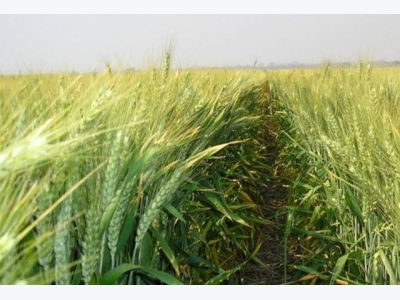Study finds disease resistance in wheat germplasm

The results of the study are of great practical significance keeping in view the continuous search of genes for breeding multiple rusts resistant wheat varieties
Thanks to the continuous efforts of agriculture scientists in crop improvement and making the new varieties more resistant to various types of diseases, since Green Revolution, India has never seen back in food grain production. One significant constraint to increased wheat production is the variety of rust diseases attacking this crop— leaf rust, stem rust and stripe rust. Sources of resistance to these diseases are known, and have been utilised by wheat breeders for a long time. However, achieving durable resistance can be difficult, and the rust diseases continue to evolve and circumvent the breeders' achievements. Rust is spreading in different wheat growing regions in recent past and the Food and Agriculture Organization of the United Nations (FAO) in Rome issued alerts about the three diseases on February 3, 2017. Rust returned to Europe with a big outbreak in Sicily in 2016, even the hardy durum wheat, used to make pasta, was found to be susceptible to it.
Scientists from Indian Council of Agricultural Research (ICAR) in collaboration with agricultural universities have created a history by evaluating the entire wheat germplasm collection (~20,000 accessions) conserved in the Indian National Genebank at ICAR-National Bureaux of Plant Genetic Resources, New Delhi. The findings of the study authored by 37 contributors have been published in ‘PLOS ONE.’ The results are of great practical significance keeping in view the continuous search of genes for breeding multiple rusts resistant wheat varieties. This is the first such well thought of experiment conducted ever on genebank collections of this magnitude.
The study on evaluation discovered novel wheat germplasm resources carrying genes for resistance to all rusts and spot blotch diseases. 19,460 wheat accessions comprising three species of wheat - Triticum aestivum, T. durum and T. dicoccum and collected from within and outside the country were screened during the 2011-14 crop seasons sequentially at multiple disease hotspots, viz. Wellington (Tamil Nadu) for wheat rusts, Gurdaspur (Punjab) for stripe rust and Cooch Behar (West Bengal) for spot blotch. This led to shortlisting of potentially resistant accessions to multiple rusts (498 accs.) and spot blotch (868 accs.).
Testing of the selected accessions for seedling resistance against seven virulent pathotypes (collected since 1930) of three wheat rusts under artificial epiphytotic conditions at Flowerdale, Shimla led to the identification of 137 accessions potentially resistant to multiple rusts. Molecular analysis added further value to the study and helped identify different combinations of genetic loci imparting resistance to leaf rust, stem rust, stripe rust and spot blotch. The resistant germplasm accessions, particularly against stripe rust, identified in this study can act as potential resources for integrating multiple disease resistance into the genetic background of high yielding wheat cultivars through conventional or molecular breeding approaches, thus ensuring food security at national and global levels.
Another major scientific breakthrough of ICAR led to the decoding of genomes of 15 strains of wheat rust fungus Puccinia triticina. It will aid in understanding the dynamic nature of this notorious wheat pathogen. The paper "Draft genome of the wheat rust pathogen (Puccinia triticina)” published in Genome Biology and Evolution unravels genome-wide structural variations during evolution. The study found certain "host spot regions" in the genomes of Race 77 which are vulnerable for reshuffling, leading to variability in it providing an insight about P. triticina plant fungal pathogen, with emphasis on the genome structure, organization, molecular basis of variation and pathogenecity. This genome information will be an important landmark research in India and will facilitate wheat improvement programme in the country.
The Indian Institute of Wheat and Barley Research has a dedicated Center at Flowerdale (Shimla) to work on all aspects of wheat rust as its major mandate. The monitoring, timely forecasting and adoption of preventive strategies have kept India free from any major outbreak of wheat rust for last many decades. A mild loss of 5 percent by wheat rusts can cause yield reduction of 3.5 million tonnes in India. It equals approximately to loss of Rs 3,500 cores. The timely detection of new variants and the identification of resistant material, thereafter, have prevented any major loss to wheat. The strong and vibrant programme of monitoring wheat rust virulences has paid rich dividends to the nutritional and food security of the country.
Related news
 What’s next for agricultural biologicals
What’s next for agricultural biologicals Agricultural biologicals are putting crops, and the entire crop input market, on the fast track for growth. These natural products work alongside a plant’s own
 Techno-culture in Farming
Techno-culture in Farming Agriculture has to be the main pillar of Indian economy as more than half of the population in the country is dependent on it.
 How Agriculture Technology Has Helped Feed Our Growing Population
How Agriculture Technology Has Helped Feed Our Growing Population Even if you’ve never being involved in anything that has to do with farming, you could easily attest to the changes in agriculture technology throughout history